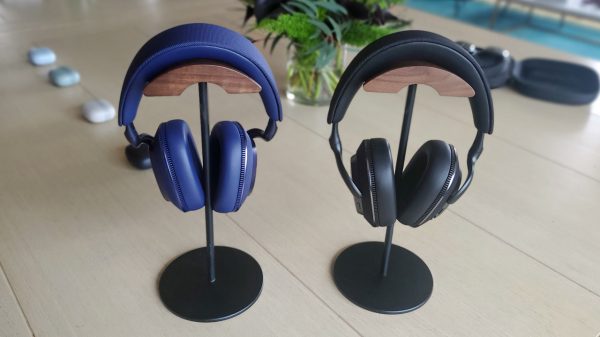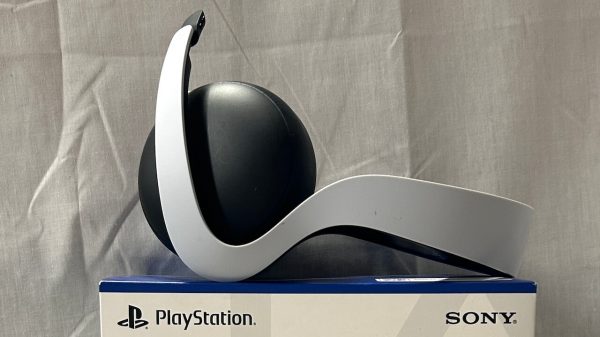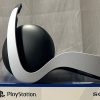Gaming headphones in a Hi-Fi magazine? Blasphemy. There was a time when I would turn down offers to review gaming headphones without even flinching because my experience over the years with them was never all that great. My daily life is far too busy to be anything more than an occasional gamer and my focus with gaming is in the visual end.
There are some incredible console and PC games currently available and it’s hard not to be impressed by their visual impact on 4k monitors designed specifically for that segment of the market. LG and Samsung love to introduce new models every year and 2022 was no exception. We’re not sure how any teenagers are affording such expensive TVs but they wouldn’t offer them if the customer base didn’t exist.
When it comes to gaming headphones, the market has really started to evolve over the past few years. The popular HyperX series started life as a Takstar Pro 80 which offered solid value for the money but really wasn’t a great headphone; Cloud simply added a boom mic and called it a gaming headphone.
That was definitely a trend for a number of years with a lot of mediocre headphones entering the category.
But as gaming has evolved on the visual front, it has also made some very impressive and important strides in the sound department. Sound has become an integral component of every game and often provide clues in terms of what is happening around the player and what might be lurking around the next corner.
The other major change involves the use of headsets that became rather essential tools during the pandemic as millions of office workers and executives had to pivot from their cubicles and boardrooms to home offices.
Headsets suddenly had to be reliable, durable, comfortable, and offer excellent Zoom call quality.
All of those changes created an enormous opportunity for companies like LucidSound to become a rather big player in the market with models ranging from $25 for their LS1P Premium Chat Headset for the PS5 to $199 for their flagship wireless headset for the Xbox Series X|S and Xbox One.

LucidSound offered to send us the LS50X which have become very popular and we’ve heard only good things about that model from a lot of gamers.
Started in 2016, LucidSound was founded by gaming industry veterans who saw an opportunity in the market for better quality gaming headphones. After 4 years of steady growth, the company was acquired by PowerA; a larger company within the category that markets a rather extensive lineup of gaming peripherals.
Why cover the LucidSound LS50X? A quick search through our headphone reviews will reveal what we already know; high-end audio brands such as Audeze and Beyerdynamic have already taken the plunge into the gaming category and with a surprising amount of success. Just how successful? 40% of Audeze’s headphone sales over the past 2 years have been the gaming category.
With consumers spending billions of dollars each year on console and PC gaming, there is a legitimate opportunity for headphone manufacturers to diversify their business in the coming years. Audeze and Beyerdynamic were very smart to take the leap while others sit and wonder if it makes sense.

The Skinny
The LucidSound LS50X come with everything you might need to connect the headphones to any of the popular gaming consoles or your PC.
The supplied kit includes a carrying case, 3.5mm auxiliary cable, USB charging cable, USB wireless adapter, LS50X headphones, and a removable boom mic. The instruction manual is a bit thicker than one might expect with several connection options to choose from.
The construction and build quality of the LS50X is better than I expected from a pair of gaming headphones and LucidSound have wisely used metal construction throughout the design.

The headband is steel and can be bent to adjust clamping force (those of us with glasses will likely need to) and the yokes are metal as well and have a unique design that encircles the cups rather than stopping at the half-way point like most headphones.
The headband and ear pads are wrapped in vegetable leather with the headband having a quilted underside with gel-cooled memory foam padding and the pads having a velour face to increase comfort and airflow and vegetable leather sides to help with bass quantity and isolation.
The ear pads have a squared face and are nearly and inch deep so the drivers sit well back from the ear.
The ear cups rotate 90° to the rear and about 15° to the front on the vertical axis and have about 20° of play on the horizontal axis to help get a good seal.

The cups are a high-impact polymer material with the entire outer face being a control surface; these are not a capacitive touch sensor but instead are a button with a tactile click in the center with a volume wheel around the top half of the perimeter.
In addition to the faces being active controls, the left cup features the power button, USB port, 3.5mm port for auxiliary cable, and a recessed 3.5mm port for the boom mic from top to bottom. All of the LED indicators are present on the left cup. The right cup has a single button for Bluetooth pairing and EQ functions.
LucidSound decided to not compromise on one thing that might annoy some users but was the correct decision from a long-term durability perspective; the LS50X do not fold up for storage purposes and therefore take up more space than some competing designs.
The upside is that they are a lot more durable than the lighter models available from other brands and when you’re spending $200 on a pair of gaming headphones that will deal with a lot of abuse — that’s a compromise worth accepting.
Internally, the LS50X utilize 50mm dynamic drivers. LucidSound are not very forthcoming on the specifications so we decided to do some in-house measurements to confirm that the nominal impedance is 32 ohms and the sensitivity is 95dB/mW using the supplied 3.5mm cable with the electronics turned off.

The LS50X support Bluetooth 5.0, SBC, and AAC. There is also a Wi-Fi dongle to use the headphones with an Xbox and PC. While this covers most consoles, PCs, and Apple devices, it does not offer support for aptX for Android users.
Gamers spend a lot of time playing and battery life is one of the most important features of any gaming headphone. LucidSound’s claim of 20 hours of playtime is very accurate; we ran our usual tests multiple times and that proved to be the average with both gaming and music listening.
Once the headphone’s battery is completely discharged, it takes between 2.5 and 3 hours to recharge the unit.

Sound
With Audeze and Beyerdynamic raising the bar with gaming headphones that can deliver a great gaming and music listening experience, it made sense to review the LS50X with an Xbox S, Windows laptop (running Foobar), and Apple iPad; all 3 provided a very different opportunity for the headphones to perform.
Out of the box, it was odd to discover that the default tuning isn’t set for gaming.
Weird.
My listening notes’ reflect the out of the box tuning which can be altered with the 5 EQ modes; Bass Boost, Movie, Music, Flat EQ, and Signature Sound.
Much to my surprise, the sub bass range is not elevated and I did discern that the headphones begin to exhibit roll-off around 55Hz and that there was very little bass energy present below 40Hz. Those expecting to have their skulls rattled by gunfire and explosions will be disappointed.
The flip side is that the bass impact is far better defined and cleaner sounding than most of the gaming headsets that we have tried so far; texture, detail, and timbral accuracy were first rate.
The mid bass is rather linear and clean sounding as well which really made certain aspects of gameplay more enjoyable; one would be rather surprised at all of the detail present in some games — which often gets lost in the background because most gaming headphones can’t present it with enough clarity.
There is a slight dip as the sound moves from the upper bass into the lower midrange, but male vocals still have enough energy and detail to cut through the mix with both games and music.
Guitars notes are rather well defined when listening to alternative rock or blues music and I was somewhat surprised by the tonal accuracy and detail in the range.
The midrange rises to the same level as the mid bass delivering more than enough presence, resolution, and texture to keep you aware of what’s going on; female vocals and strings are rather pronounced and pushed slightly forward in the mix but not unpleasantly so.
There is a rather significant uptick in treble energy in the 8 – 10Hz range which does help open up the soundstage for a closed-back design, but it can cause some fatigue if you play or listen to music for long periods of time.
The EQ settings are rather effective; the bass boost and movie modes add more impact in the sub bass and tone down the treble energy somewhat.
While gaming, I found that the boom mic worked rather well with in-game conversations and even when I played music in the background from my phone.
The LS50X allow you to pause the team chat while playing to take a phone call and this function worked rather well. The sidetone also works rather effectively at echoing the mic directly to your ear rather than waiting for the sound to echo back from the game itself — this helps with the issue of raising your voice to speak when using a gaming headset. Parents will love this feature.


Conclusion
Does it make sense to spend $199 on a gaming headset?
The typical user is going to be more gaming-focused but the LucidSound LS50X proved to be rather effective for gaming, music, and even conference calls which is rather rare in the category.
The mic quality is a major point of differentiation and I found the experience of in-game conversations which are often mired by too many people speaking at the same time, rather enjoyable for once.
LucidSound have also delivered a gaming headphone that is built to last with metal construction and a far more comfortable headband.
These might be one of the few gaming headphones worth the $200 price of admission.
Where to buy: Purchase directly from LucidSound




































